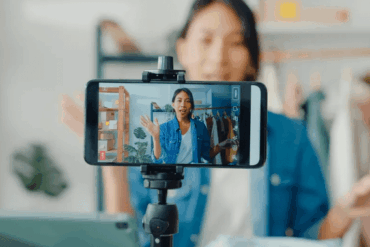By Mike Smith,
3D advertising is erupting in the OOH space. Mike Smith, CEO of Open Media, the nationwide OOH advertising provider, explains the significance of the technology and the power it offers to brands.
The future is now
3D advertising was, initially, an extravagant approach for brands with high-end budgets. But today, 3D OOH is an exciting and affordable medium with endless capabilities, including interactive options and real-time data activations. Moreover, brands capture huge social media and word-of-mouth attention by harnessing the power of 3D.
According to the Institute of Practitioners in Advertising (IPA) analysis, advertisements generating an above-average emotional response can lead to a 23% increase in sales. 3D OOH, blending the physical and digital worlds, offers countless creative possibilities to capture imaginations and ensure consumer attention is both gained and retained.
Another study by BCN Visuals found that 55% of people were likely to film a 3D advertisement to share with friends, combining the influence of mobile and OOH. Research conducted by Outsmart, meanwhile, showed a 17% uplift in smartphone brand actions when consumers are first exposed to an OOH advertisement. Furthermore, 68% viewed the brand as more premium after seeing their 3D OOH and 66% were more likely to purchase the advertised product.
Overall, 3D was found to be 3.5 times more effective than its 2D counterpart, with unique data elevations available including personalized content in real-time – influenced by things such as nearby events, location, or even the weather to ensure consistently relevant messaging.
By using programmatic buying in 3D OOH, brands can utilize audience data, proprietary insights, and analytics to measure outcomes in-flight, while post-campaign, a further range of hyper-specific insight is available to assess the impact of creative on audiences. This allows brands to seamlessly correlate the impact of their 3D activations with campaign KPIs and maximize ROI.
The science of 3D
3D OOH leverages our deep creative understanding of 3D content to captivate audiences. Our brains are wired to perceive the world around us in a certain way, and when something disrupts that perception, our attention is occupied.
This science is based on human biology. Our eyes don’t perceive things identically, with a slight difference in the angle of our view called binocular disparity. This allows us to perceive depth and the distance between ourselves and other objects. 3D OOH is an illusion that affects this depth perception.
In a 3D billboard, the display combines two pieces of footage from different angles into a single clip. This creates the 3D illusion, known as forced perspective, as our brain perceives the depth as entering our physical world.
With the ability to combine this with interactive elements, from simple touch interaction to complex augmented reality experiences, brands can captivate consumers with science and showmanship.
Online and offline benefits
3D technology creates advertising experiences that transform the consumer experience. But there are also huge benefits for brands – both online and offline – to ensure marketing impact and spend is maximized.
Screens can be targeted in real-time, with creative triggers based on many factors including location, footfall, and unfolding events. For example, we worked with SkyBet on their first-ever 3D activation in 2022 for the Championship play-off final. Leveraging our iconic BOXPARK Wembley Way site, SkyBet was able to display a range of copy based on the result of the match. This resulted in a 15% uplift in average session time and a 16% rise in attention time – as well as being named Ad of the Day by The Drum!
There are other strong case study benefits emerging from 3D advertising. BMW launched their X1 model with the car driving off the screen and into major cities across the world. The campaign went viral and was eventually viewed by 17 million people. Burger King enjoyed similar success during the 65th anniversary of the Whopper, as consumers were able to assemble a 3D burger in real time. This led to 70,000 drops in several hours for the iconic product, proving anniversaries, milestones and special occasions can all be influenced by 3D.
The real value of 3D OOH for brands is building a long-term relationship with audiences. With increased metrics in retention and social shareability, research suggests consumers remember a 3D activation long after engagement – with the visuals triggering the emotional responses of our brain and enhancing brand loyalty.

Celebrity sparkle
Open Media was delighted to work with international cosmetics leader Maybelline on the spellbinding 3D launch of their first-ever digital avatar, named May, who starred in an awe-inspiring OOH campaign alongside global ambassador Gigi Hadid. The inclusion of Hadid added additional weight to an already mesmerizing campaign and opened a new door of unique creative possibilities by merging the real and virtual world. We also collaborated with Paramount on a ground-breaking 3D campaign to advertise their streaming platform Paramount+, bringing iconic shows, famous faces, and world-renowned locations to life in a mind-bending 3D experience.
3D is no longer an extravagant approach. Brands can utilize its endless power on high streets and shopping centres to amaze audiences. We provide an entire full-motion 3D portfolio across the UK, and with increasingly in-depth and real-time data tracking available, 2025 is almost certain to be the year of 3D advertising.


